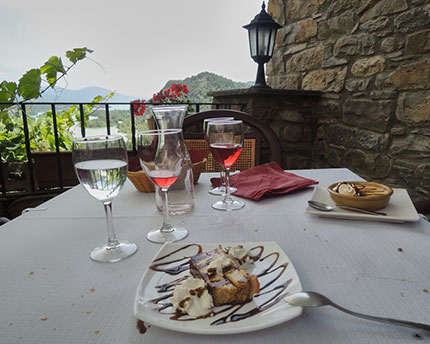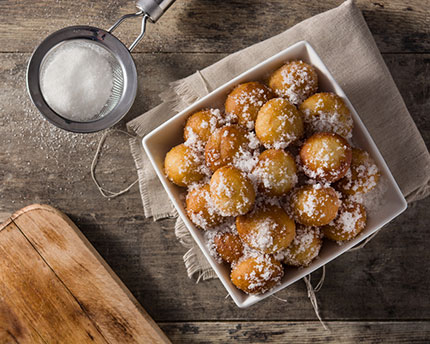The ingredient used in Huesca’s traditional food of which locals are most proud is perhaps ternasco, or suckling lamb, fed only with its mother’s milk and grains and which plays a key role in many different recipes. The dish very clearly illustrates the rural dimension of Huesca’s typical food with popular dishes that are as hearty as they are succulent, based on secular traditions that have been passed down from generation to generation.
Below are some of the most common, although each locality in the province has its own traditional dish that is well worth discovering. You will no doubt find many of them served in Huesca’s excellent restaurants.
Bacalao al ajoarriero: a local hallmark
There are always exceptions. And in the case of Huesca’s traditional food, this exception is the non-local main ingredient in one of the region’s most typical dishes, bacalao al ajoarriero, or cod in a tomato and red pepper sauce. Because, admittedly, this fish makes its way to the kitchens of Huesca from very far-off places.
But don’t forget that thanks to the salting process, which preserves fish for several years, cod was the only marine fish consumed in inland Spain for centuries. Hence why the region has such varied cod recipes, among which Huesca-style bacalao al ajoarriero is one of the tastiest. Garlic, onions, olive oil and good free-range eggs are key to its unmistakable flavour.
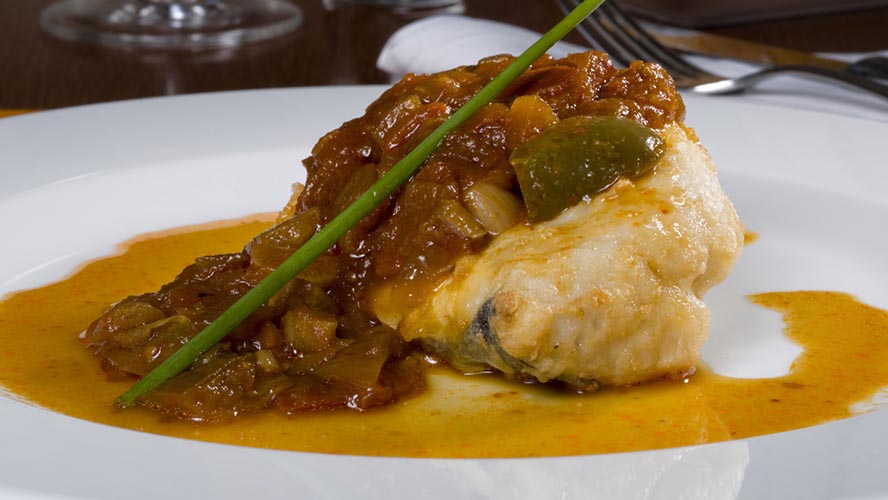
Somontano wine: quality and character
Without a doubt, any one of the D.O.P. Somontano wines are the best match for the great majority of Huesca’s traditional food. The wines are produced in the area close to the Pyrenees (link to URL on Villages in Aragonese Pyrenees), which has a micro-climate and soil perfect for the production of high-quality wine.
For instance, those produced in wineries such as Enate, Viñas del Vero, Sommos and Alodia, among many others.
Ternasco de Aragón: the star dish
As we mentioned earlier, out of all of Huesca’s traditional food, ternasco is the star dish. It is made from lamb that is just a few weeks old, weighing no more than 12.5 kilograms, which has a highly distinctive flavour
as well as a succulent, tender texture. This is especially the case when cooked in a wood-fired oven with nothing more than some potatoes, a dash of wine and the lamb’s own juices. Although it is also very appetising fried or chargrilled and in stews such as caldereta.
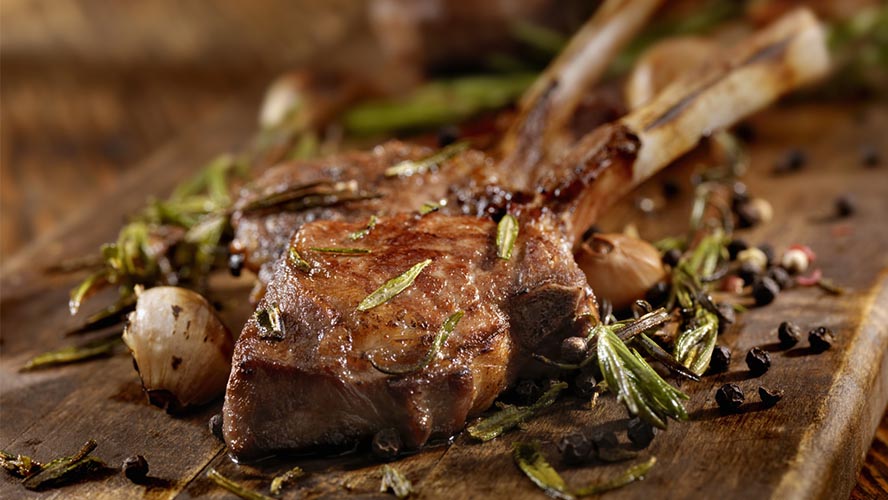
Chiretas: shepherds’ sausages
Chiretas are another example of Huesca’s traditional food, associated with shepherds and the rural world. They typically consist of a sausage made from different lamb offal cuts, cooked rice, fatback bacon, lean bacon, ham and spices. The mixture is then wrapped in lamb intestine and air cured for several weeks.
The final result is a sausage with a mild flavour that is coated in a batter made from egg and flour, fried in oil and usually served cut into slices. Chiretas are also the star ingredient of several Huesca-style stews.
Farinetas de Aragón: irresistible peasant food
Farinetas de Aragón, one of Huesca’s traditional dishes, are the equivalent of gachas from Castilla la Mancha or gofio (link to URL on Gran Canaria’s traditional food) from the Canary Islands. In other words, a dish made by cooking the flour of various grains to make it more digestible. While it is cooked over the heat, various ingredients (meat, cured meat, garlic, etc.) are added to give the dish some flavour.
Farinetas are an excellent example of basic, peasant food, although these days the versions served in many of the province’s restaurants are very appetising, especially in winter.
Trenza de Huesca: a sweet last course
This sweet delight is also known as trenza de Almudévar, after the town in the Hoya de Huesca region from which it originates. It consists of a large, sweet plaited pastry (weighing around half a kilogram) filled with nuts and raisins and then oven baked.
Trenzas de Huesca are typically served at all kinds of celebrations and get-togethers, from birthday parties to Christmas feasts, and, thanks to two Spanish supermarket chains, they have become very popular not only in Huesca but in the rest of the country.
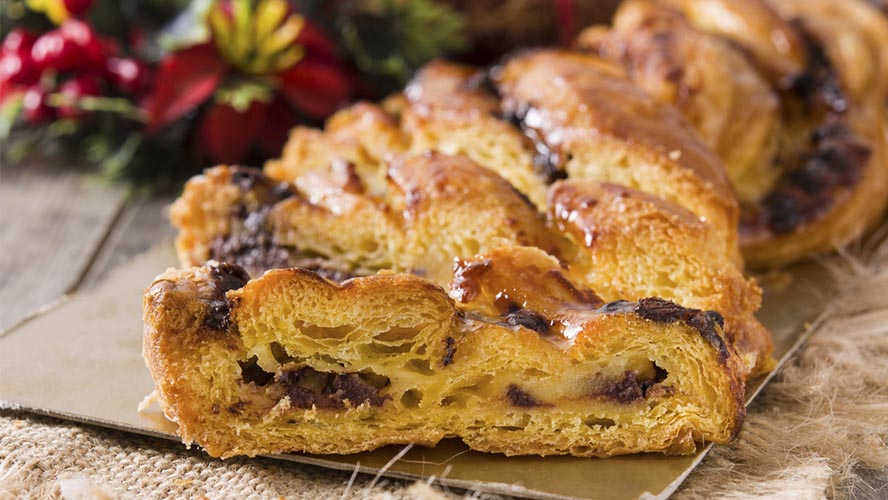
Empanadicos de calabaza: not just for Christmas
Empanadicos are sweet, oven-baked tarts made from a pastry casing stuffed with conserve and other sweet ingredients. They are traditionally eaten at Christmas, especially those made from pumpkin and raisins, although you can now find them in patisseries in Huesca all year round.
Migas a la pastora, Huesca style
Closely related to the migas from Extremadura, migas a la pastora is one of Huesca’s most popular traditional dishes.
Made from breadcrumbs (preferably from yesterday’s fresh bread), garlic and whatever cured meat you have on hand, which are all fried in lamb suet, giving it a distinctive flavour. Once cooked you can top it off with a fried egg.
Crespillos de borraja: zero-waste cooking
As far as Huesca’s traditional food goes, crespillos de borraja, or borage fritters, could certainly be considered zero-waste cooking. In this case, the recipe uses the greenest part of the borage plant, which is supposedly less tasty and less juicy than the stalks.
It is also very common to serve crespillos de borraja at celebrations. To make them, the leaves are mixed with a batter made from flour, egg, sugar and milk, which is then fried in lots of extra virgin olive oil. They can be accompanied by ice cream, honey, cream and any type of sweet sauce.
Quince Coc de Fraga
Coc de Fraga is the Huesca version of an apple tart but without the apple. That’s because the key ingredient is fresh quince, which is cut into thin strips and arranged over a pastry crust made from flour, extra virgin olive oil, sugar, salt and yeast, before baking it in the oven. It is usually decorated with pieces of walnut and other nuts.
Glorias de Huesca: for the biggest sweet tooths
Out of all of Huesca’s traditional sweet dishes, glorias are perhaps the most indulgent. That’s because these doughnut-shaped puff pastry treats are soaked in a generous dose of a sauce made from egg yolks and sugar.
Recao de Binéfar
This is perhaps the most vegan-friendly dish of Huesca’s traditional food. A stew made from white beans, oil, garlic, diced onion, paprika and pepper to which small potato chunks are added once cooked.





































































